THE FARMS LINES OF BROOKLYN (1874)
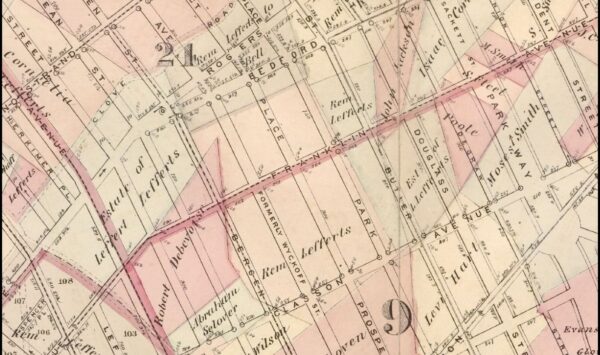
******************************************************************************************************************************** Brownstone Detectives investigates the history of our clients’ homes. The story you are about to read was composed from research conducted in the course of one of those investigations. Do you know the history of YOUR house? ******************************************************************************************************************************** Brooklyn was once one giant farm. At some point, as the farms began to be split up to be sold to developers – those who wanted to build rows of prized brownstones – companies also began to pop up which developed maps showing what types of buildings existed on every “lot” within the city. Although no longer used for fire insurance purposes, they are great tools for those owners wishing to research the histories of their properties. If you own a home in New York City, these maps can help you to determine how old it is, what else had been built in the area when your house was new, and, on some maps, the name of the farmer that had once owned your land. Find yours HERE. Follow @BrownstoneDetec Share ———————————————————————————————————————– The Brownstone Detectives Brownstone Detectives is an historic property research agency. Our mission is to document and save the histories of our clients’ homes. From our research, we produce our celebrated House History Books and House History Reports. Contact us today to begin discovering the history of your home.
WOOLWORTH’S BEDSTUY BACKYARD (1889)
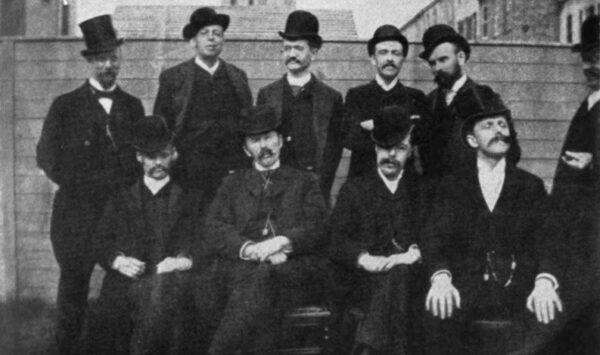
******************************************************************************************************************************** Brownstone Detectives investigates the history of our clients’ homes. The story you are about to read was composed from research conducted in the course of one of those investigations. Do you know the history of YOUR house? ******************************************************************************************************************************** In 1889, the head of the Woolworth “5 & dime” store chain, Frank Woolworth, bought a substantial brownstone house, No. 209 Jefferson Avenue, in what would become the Bedford-Stuyvesant section of Brooklyn. Their home would soon become the center of life for the Woolworth family – and their friends and co-workers. After purchasing the brownstone in 1889, Frank Woolworth would frequently entertain his business associates there, bringing them together, at least once a year, for what he termed a “Grand Five and Ten Reunion.” These reunions lasted two or three days and were jolly affairs, generally culminating in a picnic or a seashore excursion, with plenty of food and liquid refreshment. The first “reunion” would be held just a month-and-a-half after buying No. 209 and would be held annually through the early 1890s. The picture above is from their first “reunion” in 1889. All of Woolworth’s regional managers, who were often family members, posed with Frank (seated with his topper at right) at a side fence, likely the one on the west side of their property as you can see buildings along Nostrand Avenue. Follow @BrownstoneDetec Share ———————————————————————————————————————– The Brownstone Detectives Brownstone Detectives is an historic property research agency. Our mission is to document and save the histories of our clients’ […]
THE “WEIRFIELD” HOUSE ON THE HILL (1850)
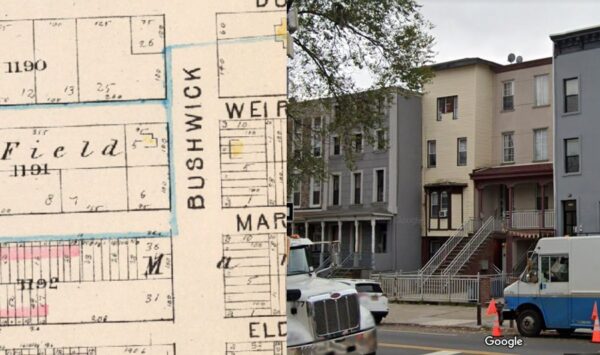
******************************************************************************************************************************** Brownstone Detectives investigates the history of our clients’ homes. The story you are about to read was composed from research conducted in the course of one of those investigations. Do you know the history of YOUR house? ******************************************************************************************************************************** If Bushwick Avenue were a family, it would likely be an entertainingly and curiously dysfunctional clan. It would maybe be something akin to that harmless uncle who comes to Thanksgiving dinner, doesn’t talk about politics, but engages in witty banter and sips a few too many vermouths. Some houses on the avenue present as mindlessly conforming rowhouses — lined up at attention like toy soldiers. Squeezed within some of those rows, however, we sometimes find structures that seem oh-so-slightly out-of-place – as though they were built in – and transported from – another time and galaxy. One such structure is a 172-year-old house that appears as though it should be sitting alone upon a hill with a view to unfolding valleys of pastureland. THE HOUSE ON THE HILL In the mid-1800s, No. 1250 Bushwick Avenue was the only house on the south side of Bushwick Avenue between Weirfield and Margaretta (Halsey) Streets. The house was erected in approximately 1850 and, in its day of glory, stood on a knoll about six feet above street level, flanked on either side by immense maple trees. The grounds sloped gently down to a stone wall, five feet above the grade of the street, which extended along the street frontage from Weirfield street to Margaretta […]
BROOKLYN & THE “JUMPING SELFIE” (1886)
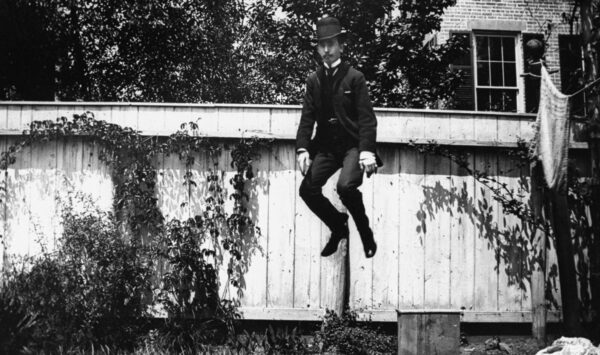
******************************************************************************************************************************** Brownstone Detectives investigates the history of our clients’ homes. The story you are about to read was composed from research conducted in the course of one of those investigations. Do you know the history of YOUR house? ******************************************************************************************************************************** In 1886, there was a LOT of jumping on Livingston Street. That year, a man by the name of Wallace G. Levison, an amateur photographer who lived on the street with his family, was testing a new type of film along with its ability to capture subjects in the process of motion. As the dawn of the 20th century approached, newer, more sensitive film emulsions were being developed that allowed pictures to be taken with faster and faster shutter speeds. Levison was set on experimenting with them. An avid photographer, he used the new technology both as a scientific tool and a recreational activity. In addition to being an amateur photographer, Levison was a chemist, inventor, and lecturer who founded the Departments of Mineralogy and Astronomy at the Brooklyn Institute of Arts and Sciences in the latter half of the 19th century. He may have also invented the concept of the “jumping selfie.” ORGANIZING SHUTTERBUGS Born at 1435 Pacific Street, Brooklyn (where – except for the 1880s-1900s – he would live for most of his life) in 1846, Levison attended Cooper Union, New York City’s prestigious free school for the sciences and arts, and graduated with a BS from Harvard in 1870. He was a member of the New York Mineralogical […]
MONKEY SHINES AT No. 72 ST. JAMES PL (1889)
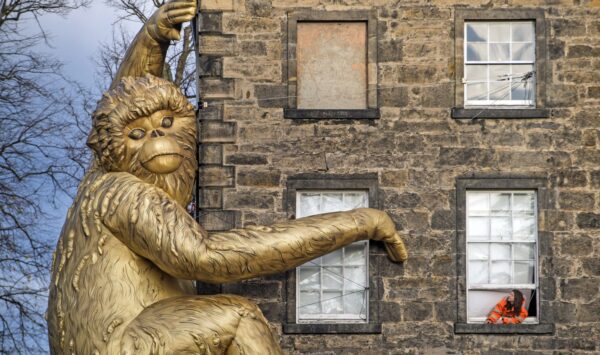
******************************************************************************************************************************** Brownstone Detectives investigates the history of our clients’ homes. The story you are about to read was composed from research conducted in the course of one of those investigations. Do you know the history of YOUR house? ******************************************************************************************************************************** A monkey in Victorian Brooklyn was not the most unusual sight to behold. In fact, the furry little creatures had been roaming the streets of the city since the introduction of the organ grinder. What was unusual, however, was waking up to one that was in “undisputed possession” of your house. ACT I – THE CREATURE APPEARS One Sunday morning in the summer of 1889 at the residence of Mr. William C. Mellins, No. 72 St James Place, Brooklyn, and in that of his next-door neighbor, lawyer William H. Morse, a disturbance of a sort took place. The 2-story and mansard brick residences of Messrs. Morse and Mellins sat, at the time, in a very rustic setting. They were “in the middle of a little block of five buildings, which have vacant lots on either end and a fruit orchard in the rear.” Well, late on a Saturday evening, Mellins happened to be drawn to a sound at his second-story front window. When he went to investigate, he looked toward the sounds, which appeared to be coming from his window. What he saw caused him to wonder if he were seeing things. There returning his gaze was a monkey clinging to his windowsill, looking into the room. Then, as quickly as […]
PAINTING THE HUDSON AT No. 75 ST. JAMES PL
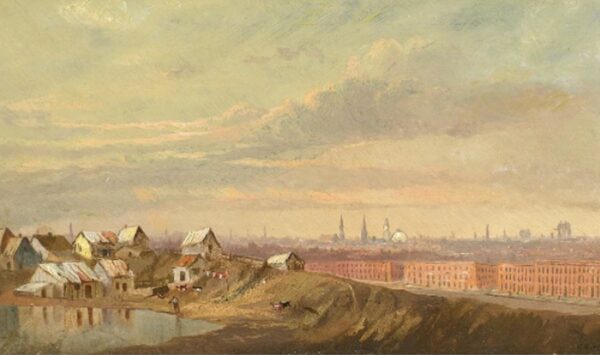
******************************************************************************************************************************** Brownstone Detectives investigates the history of our clients’ homes. The story you are about to read was composed from research conducted in the course of one of those investigations. Do you know the history of YOUR house? ******************************************************************************************************************************** Charles Day Hunt was a talented landscape painter whose work pivoted between the naturalism of the Hudson River School and the expressionism of the Tonalists. Born in Detroit, Michigan, in 1840, he eventually settled in Brooklyn, New York, around 1858 and trained under the landscape painters of the day: John F. Kensett and Alexander Wyant. Hunt’s exhibitions of oil and water color works took place from his studio at No. 75 St. James Place in Clinton Hill section of Brooklyn. Hunt’s work seamlessly blends the influences of both of his mentors in an individual style of crisp brilliance and atmospheric moodiness. Beginning in 1866 going through 1886, Hunt exhibited many times at The National Academy of Art & Design and The Brooklyn Academy of Art. He gained prominence as a member of The Black & White Club, which was a private American art association. Hunt died in 1914 in Brooklyn where, in his studio, his funeral was held. The body lay “beside the empty studio chair, pulled up before the easel,” noted the Brooklyn Daily Eagle, “on which was the picture Mr. Hunt had been working on before his seizure; the palette and oil colors were still wet.” Today, his works can be found in private and public collections, including The Brooklyn Museum […]
No. 4 EAST 78th ST, UES: A BRIEF HISTORY
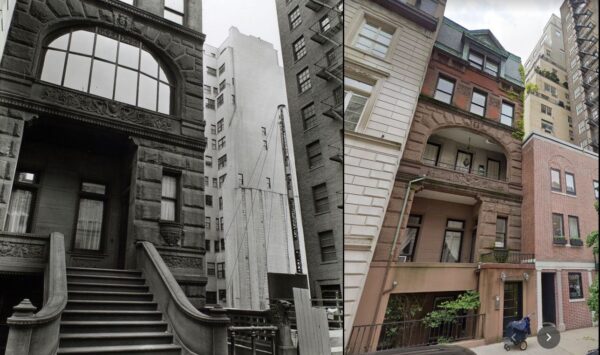
******************************************************************************************************************************** Brownstone Detectives investigates the history of our clients’ homes. The story you are about to read was composed from research conducted in the course of one of those investigations. Do you know the history of YOUR house? ******************************************************************************************************************************** According to Christopher Gray’s Streetscapes: Reader’s Questions, of the New York Times, No. 4 East 78th Street, is a Queen Anne-style house “built in 188 by the developer-architect Edward Kilpatrick. Upon completion, Kilpatrick sold it to the family of Arnold Falk, then living in a rowhouse at 129 East 64th. Mr. Falk was in the tobacco business on Water Street with his brother, Gustav, who lived in an adjacent house, 131 East 64th. On East 78th, Mr. Falk lived with his wife, Fannie, their two children and four servants. In the 1910’s and the 1920’s the house was occupied by the family of Jacob Dreicer, a principal in the Dreicer & Company jewelry firm founded in 1869, which was prominent in this period. There are now seven apartments in the building.” (New York Times, Sunday, 2 June 1991) Follow @BrownstoneDetec Share ———————————————————————————————————————– The Brownstone Detectives Brownstone Detectives is an historic property research agency. Our mission is to document and save the histories of our clients’ homes. From our research, we produce our celebrated House History Books and House History Reports. Contact us today to begin discovering the history of your home.
YOUR BROWNSTONE WAS NOT BUILT IN 1899
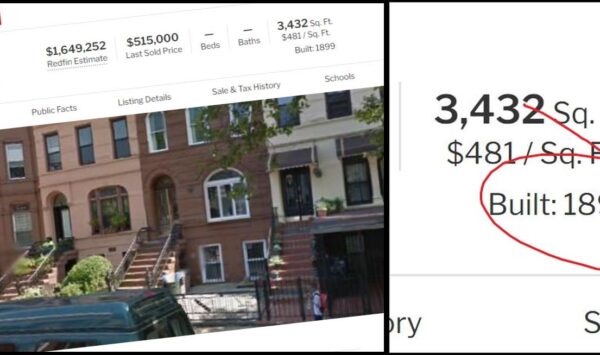
******************************************************************************************************************************** Brownstone Detectives investigates the history of our clients’ homes. The story you are about to read was composed from research conducted in the course of one of those investigations. Do you know the history of YOUR house? ******************************************************************************************************************************** We’ve all “Googled” ourselves, right? But have you ever Googled your house? Most people do this out of curiosity – just to see what might pop up. If you’ve ever done it, though, you were likely greeted with an extensive list of real estate sites that literally entreated you to click their links. Click on one of them and you may be surprised at what you find. Apparently, using their fancy algorithms, these sites can tell you nearly every detail under the sun about your property. These details include: the number of stories your house has, how many units are inside, the legal type of building it is, the district it lies within, its floor plans, the name of its neighborhood, its estimated value, various documents and permits filed, past sales, rental – and the list goes on and on… You may possibly even see images of the exterior of your rowhouse, as well as numerous snapshots of the inside (likely from a previous sale). For the most part you may note that everything – so far as you can tell – is relatively correct. There is, however, one very important piece of information that, on 99% of informational listings (including yours), is dead wrong… “BUILT IN 1899”? Why does nearly […]
HAS YOUR BROWNSTONE BEEN BURGLED? (1881)
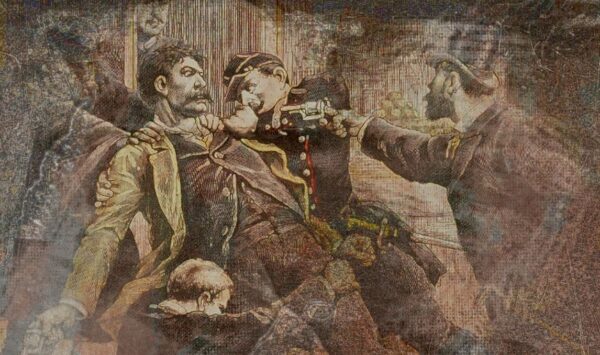
******************************************************************************************************************************** Brownstone Detectives investigates the history of our clients’ homes. The story you are about to read was composed from research conducted in the course of one of those investigations. Do you know the history of YOUR house? ******************************************************************************************************************************** New York City brownstones are veritable repositories of History. For many owners of these august “brownstone-fronts,” their homes are undoubtedly amongst the quintessential vessels within which their collective past has accrued – and has infrequently been recorded (if recalled). Ironically, it is the relatively transient nature of our brownstones’ owners (the median period of ownership of a brownstone is 15 years) that causes this history to become scattered to the ages – as one family moves out and a new family takes title to the home. Thus, with each changing of the guards, a fresh new forward-looking history begins. The “disappearance” of this history, however, serves to shackle any lineage of owners that exists, causing a sort of historical amnesia that allows your home to compare meanly with similar others in your neighborhood (esp. when placing a value on your home – or putting it up for sale). SAVING YOUR BROWNSTONE’S CRIMINAL HISTORY? Most burglaries throughout New York City history, we can be certain, have gone unreported. While most of those that do reach the attention of the police, never make it in into the papers, there are a goodly percentage of burglaries, however, that were not only reported to the police but received vivid and colorful coverage – unwanted as […]
DODIE VAN PELT & THE FROZEN ROOSTER (1888)
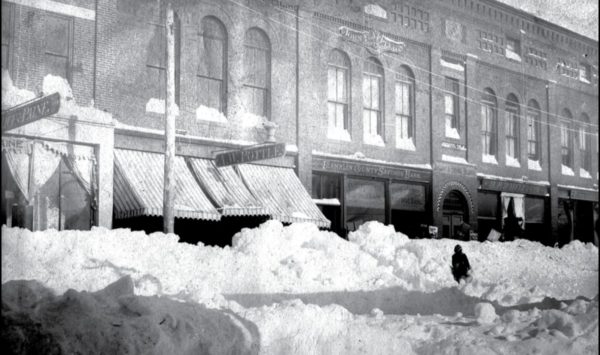
******************************************************************************************************************************** Brownstone Detectives investigates the history of its clients’ homes. The story you are about to read was composed from research conducted in the course of one of those investigations. ******************************************************************************************************************************** The following story appeared in a 1944 edition of the Brooklyn Daily Eagle, although this apocryphal tale likely appeared in many other editions of many other newspapers. It is an urban legend – one that explains an historical event in terms that would help the modern-day reader understand – concerning the all encompassing nature of the Great Blizzard of 1888. DODIE VAN PELT AND THE FROZEN ROOSTER “Dodie Van Pelt flung wide open his door and stamped out into the clear frosty night. Three days in his Park Slope mansion had put him in a fine temper. A hearty 60, he chafed and ranted at the howling wind and blinding snows which had kept him indoors from his work. “So on this night of March 15, 1888, when the velocity of the wind had diminished, Dodie walked down the hill and into the street. “He breathed the air so full of ozone and grumbled bitterly about the lost three days as he passed between the huge drifts of snow that bordered the roadway and towered 20 feet above his head. Halfway down the hill he paused, attracted by a forlorn rooster buried to its neck in a snow mound. “Grunting he knelt to lift it and found himself stroking the weather vane atop the First Unitarian Church. (“The Story […]